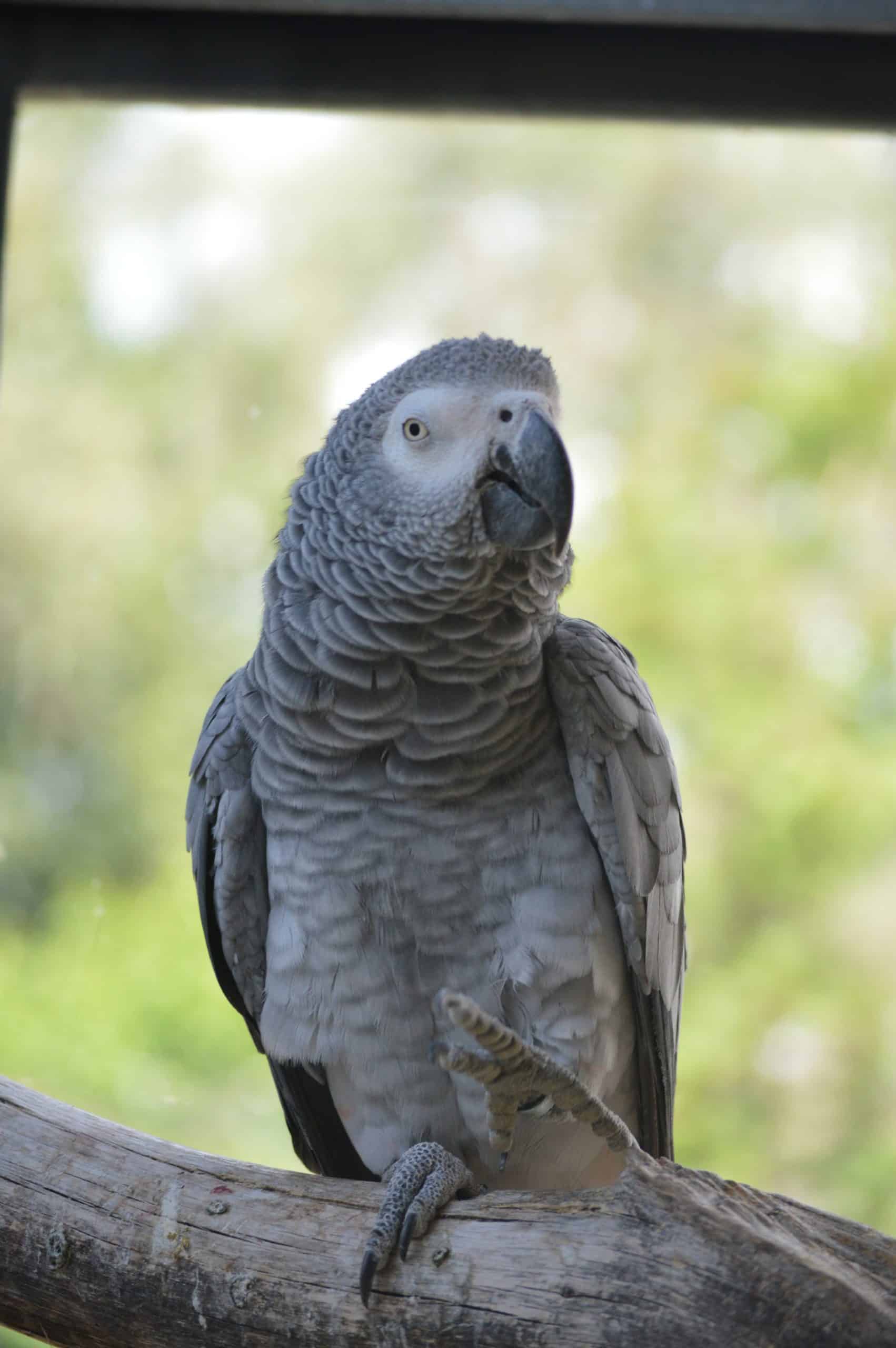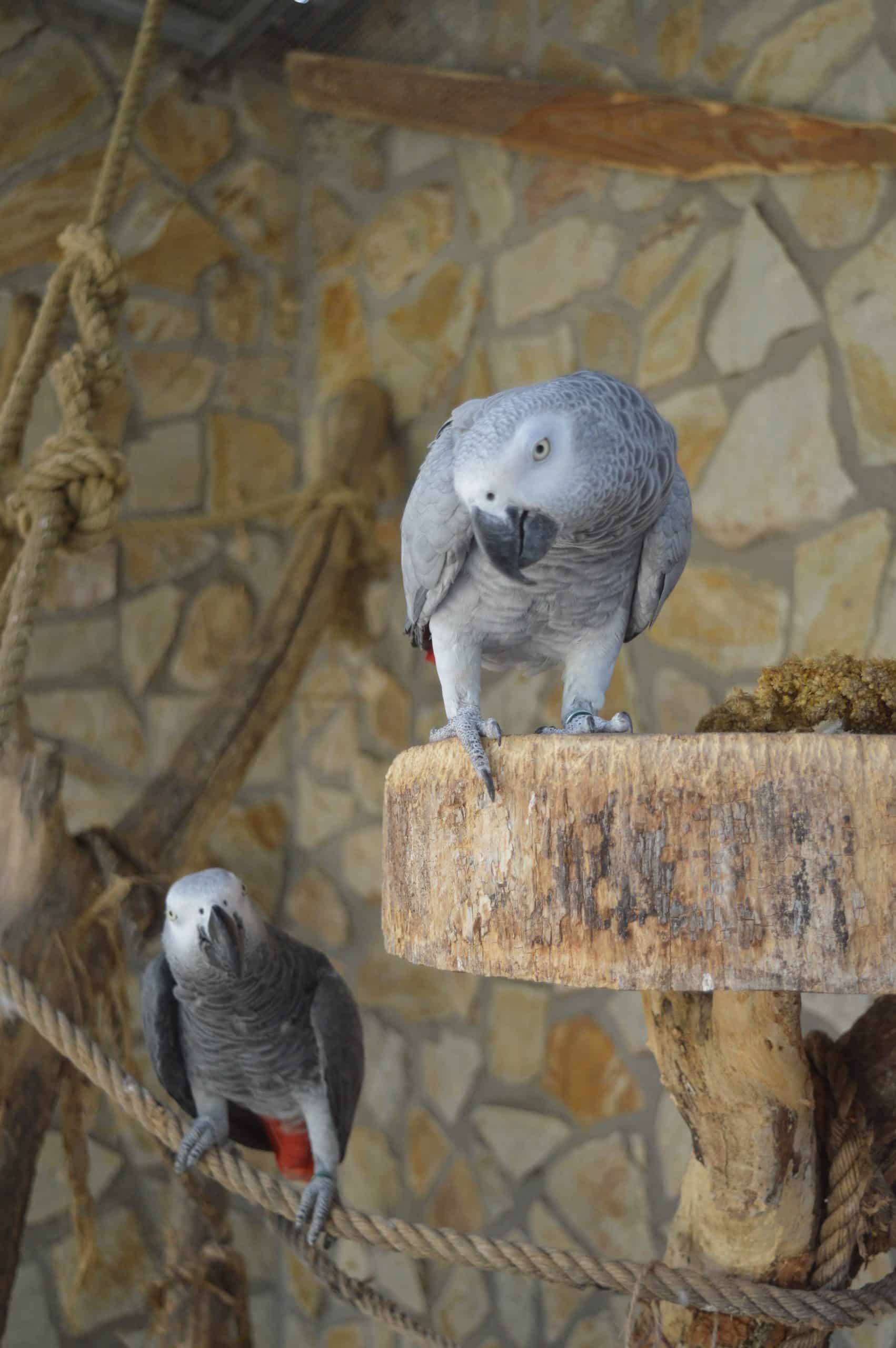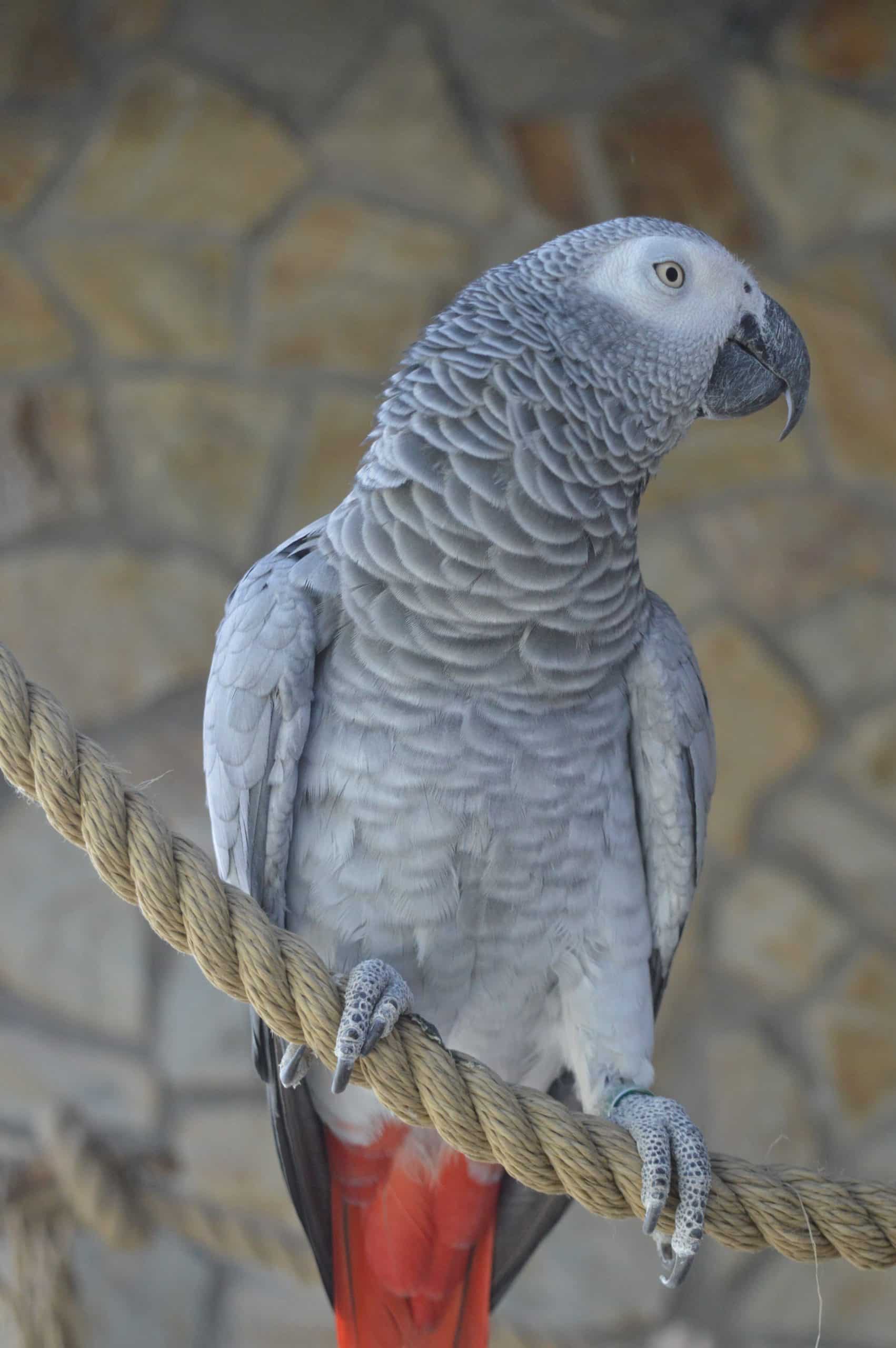The gray parrot does not boast as many colors as its South American relatives. Its soft feathers are gray, its wingtips are black and its cheeks are white. The tail consists of bright red rudder feathers. The upper jaw of the beak is connected to the skull joint, thanks to which it is mobile. The parrot can move its lower jaw forward and backward. Due to this, its edges grind against the transverse notches on the upper jaw. The gray parrot uses its beak as a “third leg” when climbing. Parrots’ legs are used not only for climbing trees, but also for feeding food into their beaks. Both outer fingers point backwards and both inner fingers forward, which allows them to grip objects effectively.
It is a noisy and social bird. It spends nights together in large flocks. During the day, larger flocks break up into smaller groups. Partnerships are usually concluded for life. They groom each other’s feathers and feed each other as a sign of affection and maintaining a relationship. Only the female sits on the clutch, the male takes care of her and brings food to her and the young.
He is a good flyer for short distances, he has no endurance for longer ones. However, he can climb very well. If an enemy appears, all birds react very quickly. They fall silent and scatter in all directions.
The gray parrot, also called the zako, is a popular pet. He can imitate the whole range of sounds, human speech also does not cause him problems. If this playful and sociable bird does not have enough stimuli in its surroundings in captivity, it easily becomes aggressive or plucks its feathers.
Parrots are also right-handed and left-handed. It’s about which leg they prefer when grasping objects.
His intelligence is compared to the intelligence of a six-year-old child – he can learn to distinguish objects, materials, solve puzzles…














